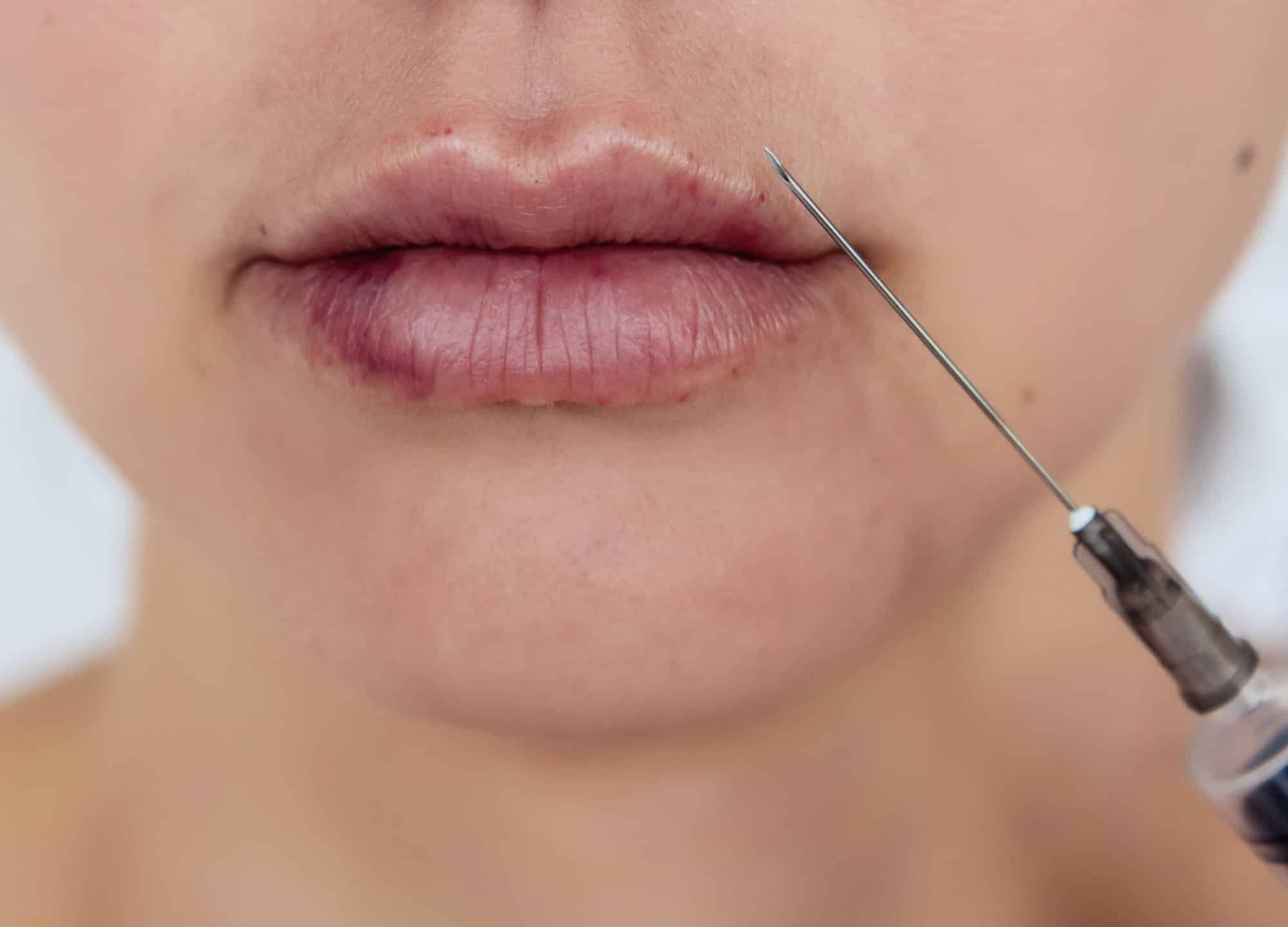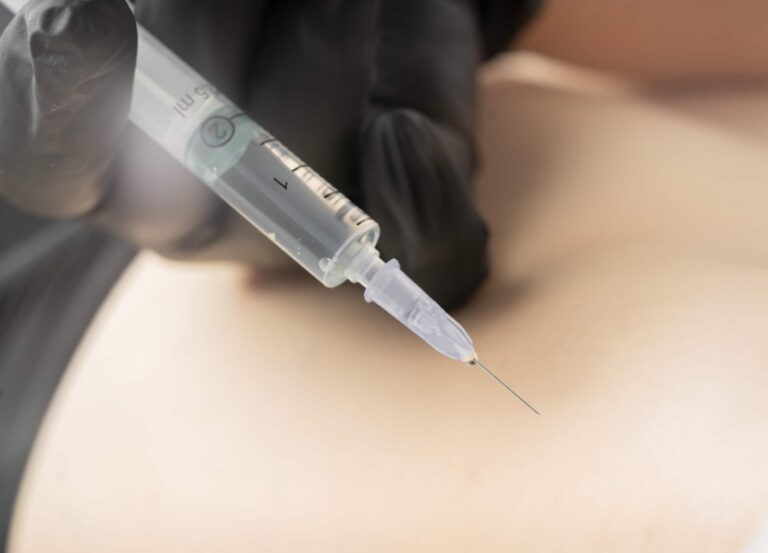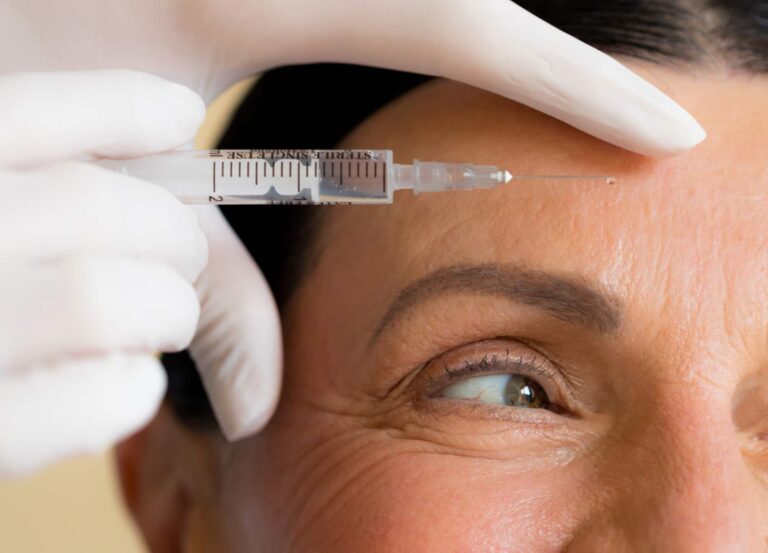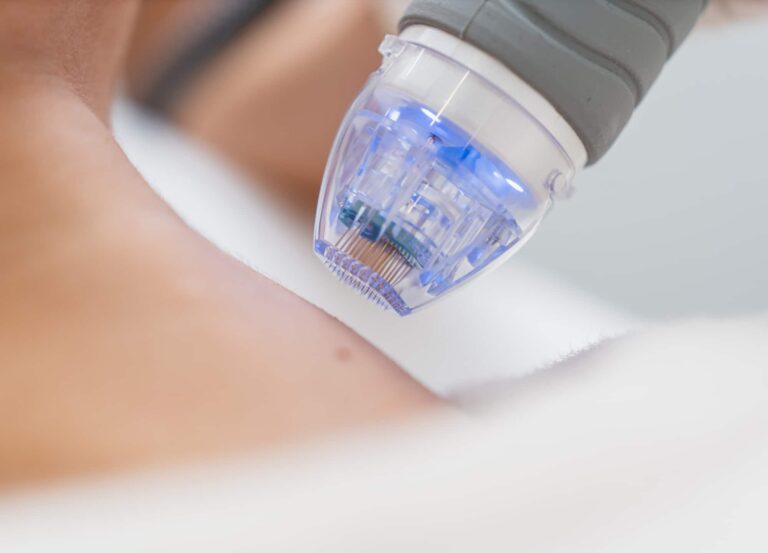The hard truth is that no cosmetic procedure—be it minimally invasive injectables or full-on plastic surgery—is without risk. And of all the potential things that could go wrong, skin necrosis is one of the scariest, requiring immediate medical attention. It’s more likely to occur after major surgeries, though can also happen if there’s vascular occlusion from injectable filler; but when caught early, skin necrosis is treatable. Here, doctors explain everything you need to know about what causes it, warning signs to look for, and steps you can take to prevent it.
What is skin necrosis?
“Skin necrosis is the death of tissue, which occurs when there’s not enough blood and oxygen flowing to a specific region,” explains Dr. Michael Horn, a board-certified plastic surgeon in Chicago. To survive, living tissue needs oxygen, which is carried to the cells by hemoglobin in the blood. Disruption in the blood supply to a particular area will result in death, or necrosis, of the cells in that area, adds Dr. Shwetambara Parakh, a board-certified plastic surgeon in Englewood, New Jersey. Any kind of trauma to the skin or wound can potentially lead to necrosis, particularly if the wound isn’t cleaned or properly cared for, as certain bacteria can cause necrosis, notes Dr. George Bitar, a board-certified plastic surgeon in Fairfax, Virginia.
What causes skin necrosis?
In the case of plastic surgery, when the skin is cut and raised, the blood supply has to travel a relatively long distance to get to all the cells, increasing the potential for necrosis, Dr. Parakh explains. Undue tension on the skin after suturing, such as in the case of a tummy tuck, as well as excess pressure from a post-surgery hematoma or seroma can also cause necrosis. “When tissue pressure increases, it exerts a compressive force and clamps down on the small blood vessels and capillaries. There’s then a lack of blood flow and oxygen that can in turn result in necrosis,” says Dr. Parakh. And as far as injectable filler goes, if the filler is inadvertently injected into or blocks a blood vessel (aka vascular occlusion), this can also lead to skin necrosis.
What increases the risk of skin necrosis?
First, know this: skin necrosis is rare after plastic surgery. According to Dr. Horn, the risk after a facelift is only 2–3%. That being said, larger surgeries—body lifts, breast reductions, facelifts—do come with more risk, notes Dr. Andrew Cohen, a board-certified plastic surgeon in Encino, California. “All of these involve more elevation of the skin and repositioning of deeper tissue,” he explains. In the case of fillers, it’s more likely to happen in spots where there’s a higher likelihood of vascular occlusion—areas that are more vascular, such as the nose, temples, and buttocks.
However, all the experts we spoke with agree that smoking is perhaps the biggest risk factor. “Skin necrosis is more likely to happen in patients who are smokers. Nicotine is a vasoconstrictor that impedes blood flow,” Dr. Cohen explains. Ultimately, the size of the blood vessels actually shrinks so that they carry even less of that necessary oxygen to areas that are healing, Dr. Parakh adds.
What are the signs of skin necrosis?
Pay close attention to how your skin both looks and feels. Common symptoms include redness and tenderness, blisters, swelling, and dark brown or even black discoloration of the skin, says Dr. Bitar. Skin necrosis also happens—and progresses—extremely quickly, over a matter of days or even hours, he adds. Time is of the essence, so if you notice any of the above symptoms, contact your doctor immediately.
How is skin necrosis treated?
“To be most effective, treatment must start quickly and aggressively,” says Dr. Horn. Exactly what this entails will vary depending on where the necrosis is occurring, what caused it, and how severe it is. If it’s a result of a mechanical interruption of the blood supply caused during surgery, this can be surgically improved, so long as it is caught early enough, says Dr. Parkh. Similarly, excess pressure from sutures can be released or a hematoma or seroma drained, to alleviate pressure, she adds. If vascular occlusion is suspected, the filler can be dissolved with hyaluronidase (so long as it’s a hyaluronic acid–based filler, like Juvéderm or Restylane).
Hyperbaric oxygen therapy, during which you sit in a chamber filled with pressurized oxygen, is another potential treatment option; it allows for enhanced absorption of the oxygen to the areas of the body where it’s needed, says Dr. Cohen. (If done before and after surgery, it can also help prevent necrosis, he adds.) In severe cases, leech therapy is sometimes used, because the leeches secrete an anticoagulant that keeps the blood flowing. And while it’s not always warranted or necessary, sometimes removal of the dead tissue—either surgically or via autolytic wound gels that allow the body to break down the dead cells on its own—is needed. “Dead skin can get infected and endanger the surrounding areas,” explains Dr. Parakh. Not to mention that if the original cause of the skin necrosis was, in fact, a bacterial infection, you’ll need to keep the infection from spreading.
How can you prevent skin necrosis?
Stop smoking or using nicotine products before (and after) any surgery. Your doctor will advise as to exactly how long you need to do so, based on the particular procedure you’re having, notes Dr. Bitar. Taking care of your wounds after the fact is also paramount. Make sure to clean them and change any bandages regularly/as directed. Finally, be mindful of applying any undue pressure on the operated area, particularly with compression garments. Consult with your doctor to make sure they’re fitting properly—and check underneath them regularly, to ensure your skin isn’t showing any of the aforementioned symptoms of necrosis, says Dr. Parakh.











